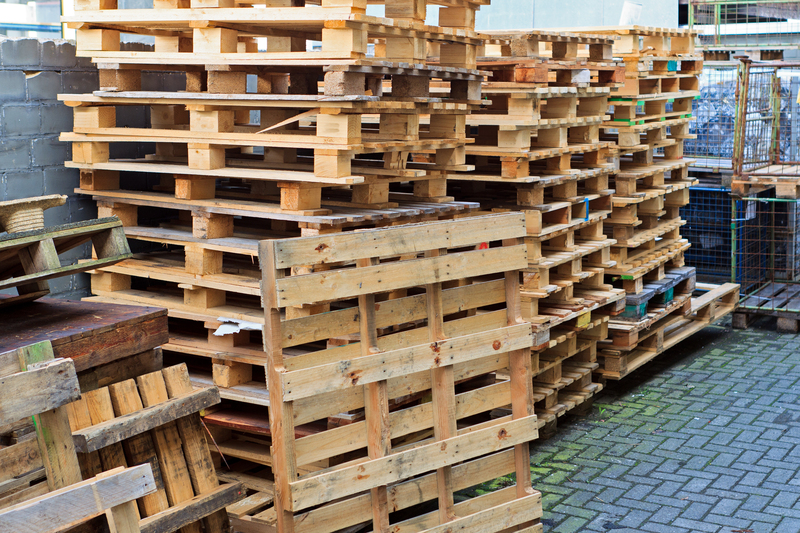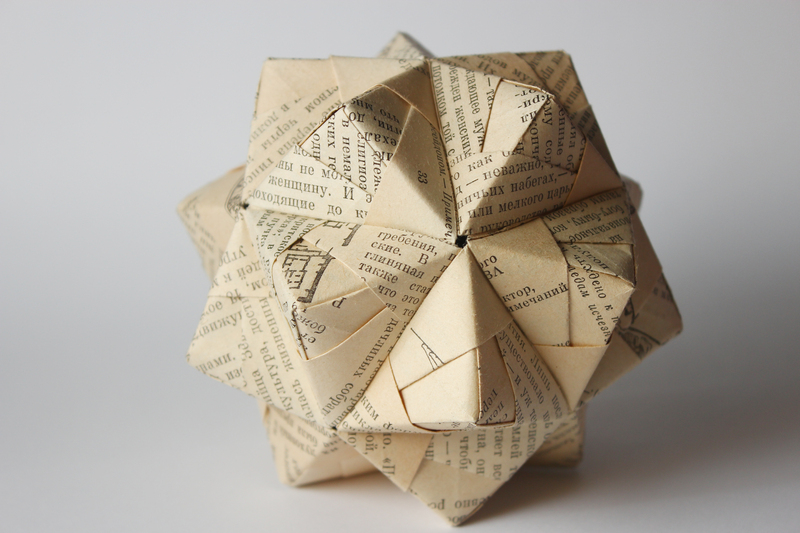Making the Most of Your Pots and Pans at the End of Their Life
When your pots and pans start showing signs of wear and tear, it can be tempting to simply toss them out and replace them. However, before you say goodbye to your trusty cookware, consider the many eco-friendly and creative ways you can make the most of them. In this comprehensive guide, we'll explore sustainable practices, recycling options, and inventive ways to repurpose your old cookware, ensuring you give your kitchen essentials a meaningful send-off.
Recognizing When Pots and Pans Have Reached the End of Their Life
Before considering disposal or repurposing, it's essential to identify when your pots and pans are truly at the end of their usable life. Some signs that indicate it's time to retire your cookware include:
- Warped bottoms causing uneven cooking.
- Peeling nonstick coating, which could pose health risks.
- Cracks or chips in enamel or ceramic surfaces.
- Loose or broken handles that make the cookware unsafe to use.
- Persistent rust or pitting, especially in stainless steel or cast iron pans that you can't remove despite best efforts.
Sometimes minor damage can be repaired or cleaned, but if your cookware exhibits several of these problems, it's time to consider your options for responsible disposal or reuse.

Sustainable Ways to Dispose of Old Pots and Pans
When you decide to part with your cookware, mindful disposal techniques are critical for minimizing environmental impact. Here are some eco-friendly solutions for old pots and pans:
1. Donate Usable Cookware
If your items are still functional -- perhaps not perfect, but usable -- consider donating them:
- Thrift stores and secondhand shops like Goodwill or Salvation Army often accept cookware.
- Charitable organizations serving shelters, soup kitchens, or families in need may gladly take usable pots and pans.
- Community groups on platforms such as Facebook Marketplace, Freecycle, or Buy Nothing can connect you with someone who would appreciate secondhand cookware.
2. Recycle Old Metal Pots and Pans
Most pots and pans -- especially those made from stainless steel, aluminum, or copper -- are recyclable. Here's how to recycle cooking utensils properly:
- Check local recycling guidelines: Contact your city or county recycling center to find out if they accept cookware. Some require you to drop off scrap metal at a specific location.
- Remove non-metal parts: Take off any plastic handles, knobs, or glass lids. Metal parts are typically the only recyclable component.
- Consider scrap yards: Local scrap metal dealers often accept cookware and might even pay a small amount based on the type of metal.
If your town's curbside program doesn't permit cookware recycling, don't trash your items -- seek out dedicated metal recycling services instead. Recycling pots and pans not only keeps waste out of landfills but also reduces the demand for new raw materials.
3. Upcycle or Repurpose Old Pots and Pans
For those who love DIY projects and creative upcycling, aged cookware provides a world of possibilities. Below, we dive deep into imaginative ways to reuse old pots and pans and extend their useful lives.
Creative Ways to Repurpose Old Pots and Pans
Don't let your beloved cookware become waste. With a little creativity, you can give your kitchen essentials a new role in your home, garden, or even as art. Here are some popular and inventive options:
1. Turn Old Pots and Pans into Planters
- Drill drainage holes in the bottom to improve plant health.
- Fill with potting mix and plant herbs, succulents, or flowers.
- Arrange on patios, balconies, or windowsills. Their quirky look adds charm!
This approach is especially popular for cast iron pans and saucepans, which offer durability and rustic appeal.
2. Wall Art and Home Decor
- Decorate pans with paint, fabric, or mosaic tiles to create unique wall hangings.
- Arrange different sizes and shapes of pans in an artistic display in your kitchen or dining area.
- Convert lids into mirrors or chalkboards for messages and notes.
The metallic finishes and vintage looks of old cookware can enhance any rustic or industrial-themed interior design.
3. Organizers and Storage Solutions
- Use large pots as storage bins for household items like utensils, craft supplies, or toys.
- Shallow frying pans can become trays for keys, wallets, and daily essentials near your entryway.
4. Bird Baths and Feeders
- Shallow pans make excellent bases for bird baths or feeders in your garden.
- Hang them from trees or mount on posts, ensuring they're securely installed for wildlife safety.
*Repurposing cookware outdoors not only helps the environment but also creates delightful garden accents.*
5. Candle Holders and Table Centerpieces
- Fill a clean pan with sand, seashells, or pebbles and nestle candles inside for a striking centerpiece.
- Small pots make charming votive holders for patios or dinner tables.
6. Clocks or Timepieces
- Attach a clock mechanism to a brightly painted frying pan and display it in your kitchen.
- Decorate with numbers or leave minimalist for a modern twist.
Additional Upcycling Ideas for Old Cookware
- Wind chimes: Suspend cutlery and metal pans using wire and beads for musical outdoor art.
- Tool caddies: Tall saucepans become holders for garden trowels or artists' brushes.
- Pet bowls: Heavy pans, after thorough cleaning, can serve as un-tippable bowls for pets.
- Pencil holders: Small pots brighten up office desks as stationary caddies.
- Bakeware organizers: Use old baking trays as drawer dividers for organizing kitchen tools.
Special Considerations for Certain Types of Cookware
Not all pots and pans are built the same, and knowing how to handle each material at the end of its life ensures optimal safety and sustainability.
Nonstick and Teflon Pans
Nonstick coatings (such as Teflon) wear out over time. Never attempt to recycle nonstick-coated pans with other metal items unless your facility specifically accepts them. Some brands offer a take-back program for their products -- always check the manufacturer's website for details.
Cast Iron Cookware
Even heavily rusted or chipped cast iron skillets can often be restored with the right techniques. However, if a pan is cracked or broken, recycle it at a scrap metal facility or upcycle it as a garden decoration or planter.
Aluminum and Stainless Steel Pots
Both materials are in high demand at recycling centers. Remove any non-metal attachments and recycle according to local regulations.
Copper Cookware
Copper items fetch great prices at scrap yards. Before recycling, make sure to strip off removable parts, and consider upcycling them as gorgeous home accents due to their unique color and shine.
Ceramic and Enamel Cookware
Ceramic and enamel can't be recycled with metals but they can be repurposed creatively--think mosaic art, planters, or quirky storage containers.
How to Prolong the Life of Your Cookware
While reusing and recycling are crucial, the best way to make the most of your pots and pans is by extending their lifespan right from the start:
- Use proper utensils (wooden or silicone) to prevent scratches, especially on nonstick surfaces.
- Clean gently -- avoid steel wool on delicate finishes.
- Store carefully to prevent warping and chipping.
- Follow manufacturer instructions for use and maintenance.
By caring for your kitchen pots and pans properly, you delay their end of life, save money, and reduce waste.
Brands and Programs That Recycle Pots and Pans
Several cookware companies and organizations are stepping up to help you dispose of old pots and pans responsibly. Here are some resources:
- TerraCycle partners with select brands to offer cookware recycling programs in some locations.
- Calphalon runs mail-in recycling programs for their nonstick cookware in partnership with recycling facilities.
- Local appliance or cookware retailers may operate trade-in or recycling days.
Always check with brands, websites, or your local government for current recycling initiatives in your area.

Reasons to Avoid Sending Cookware to Landfills
Throwing away old pots and pans may seem easy, but it comes at a cost to the environment:
- Metal waste takes centuries to decompose, leaching chemicals into soil and water.
- Valuable resources are lost when recyclable metals are landfilled instead of reclaimed.
- Bulky items take up significant space, adding to landfill overpopulation issues.
By committing to recycling and upcycling old cookware, you reduce your household's environmental footprint and support a circular economy.
Conclusion: Embrace the End of Life for Your Pots and Pans
As you can see, making the most of your pots and pans at the end of their life isn't just about eco-friendly disposal -- it's an opportunity for creativity, sustainability, and even community support. Whether you recycle, donate, or repurpose your cookware, every action counts toward reducing waste and cherishing the resources we have. So the next time you're ready to upgrade your kitchen gear, think outside the trash can, and make the most of what you've already used. The environment, and perhaps your inner artist or gardener, will thank you!
Do you have more ideas for transforming or recycling old pots and pans? Share your experiences and inspire others to make the most of their kitchen castoffs!